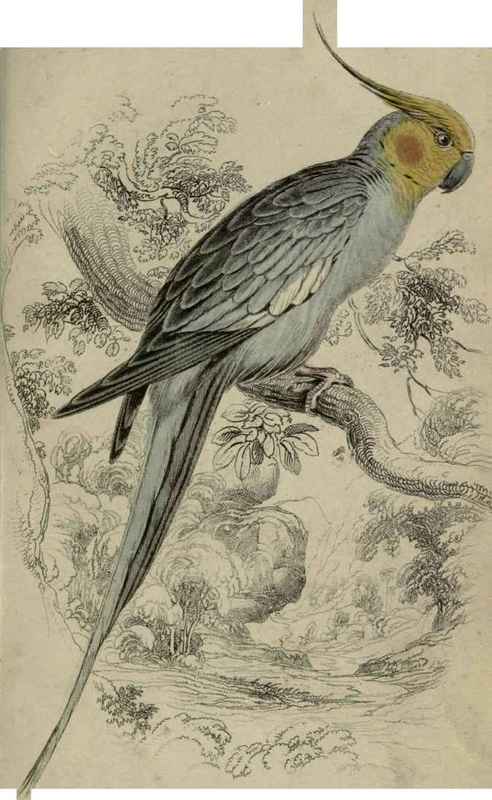Red-Cheeked Nymphicus
Description
This section is from the book "Parrots", by Prideaux John Selby. See also: Alex & Me: How a Scientist and a Parrot Uncovered a Hidden World of Animal Intelligence.
Red-Cheeked Nymphicus
Nymphicus Novae Hollandice. - Wagler.
The last group our limits permit us to mention, from its characters, which in many respects approach near to those of Pezoporus, seems naturally to be included in this division. Its members are distinguished by a crest, in one species consisting of two slender feathers, in the other of six, and similar in form to that of the Common Lapwing. The bill, in shape and proportion, seems almost intermediate between that of Platycercus and Pezoporus. the tarsi are elevated, the toes slender, with claws slightly falcate. Like most of the Platycercinae, they are much upon the ground, where they move with freedom, and feed upon grass-seeds, maize, and other corn. In Wagler's Monographia Psittacorum, they form his fourth genus Nymphicus, which title we adopt, as having been imposed prior to that of Leptolophus, by which it is characterized in Mr Swainson's Illus-trations. Our figure represents the Nymphicus Novae Hollandice.
Nymphicus Novae Hollandiae, Wag. Mon. Psitt. in Abhand., etc., p. 490 and 522. - Psitticus Novae Hollandiae, Latham, Ind. Orn. i. 102, sp. 89. - Leptolophus auricomis, Swain-son's 2d Set. Illus. - Crested Parakeet, Lath. Syn. i. p. 250, 51. - Calopsitta Guy, Less. Ill. Zool. vol. iii. 2sp. pl. 112. Female.
Though clothed in plain and unassuming plumage, as compared with many of its brilliant-coloured associates, the subject of our plate is not without its attractions, its elegant crest contributing to increase the beauty of its contour, which in other respects is equal to that of any species we have previously described. Its habits are said to resemble those of the other Platycercinae, with which its structure also accords, the elongation of the tarsi and toes giving it the same freedom of action upon the ground, where it usually seeks and obtains its food. It does nut appear to be a numerous species, as few specimens have yet found their way into our museums, and no detailed account of its natural history have hitherto been recorded. It is a native of New Holland, but of what particular district we are ignorant. It is likely that this bird and its congeners will constitute the rasorial type of this subfamily. In the lengthened tail feathers of this genus an analogy or distant affinity to the Ring Parrakeets, with which the illustrations commenced, may be traced.

Plate 30. Nymphicus Novae Hollandlae.
E. Lear del.
Red-Cheeked Nymphicus of New Holland.
Lizars sc.
(To be placed at the end of the Parrot Volume.)
Continue to:


